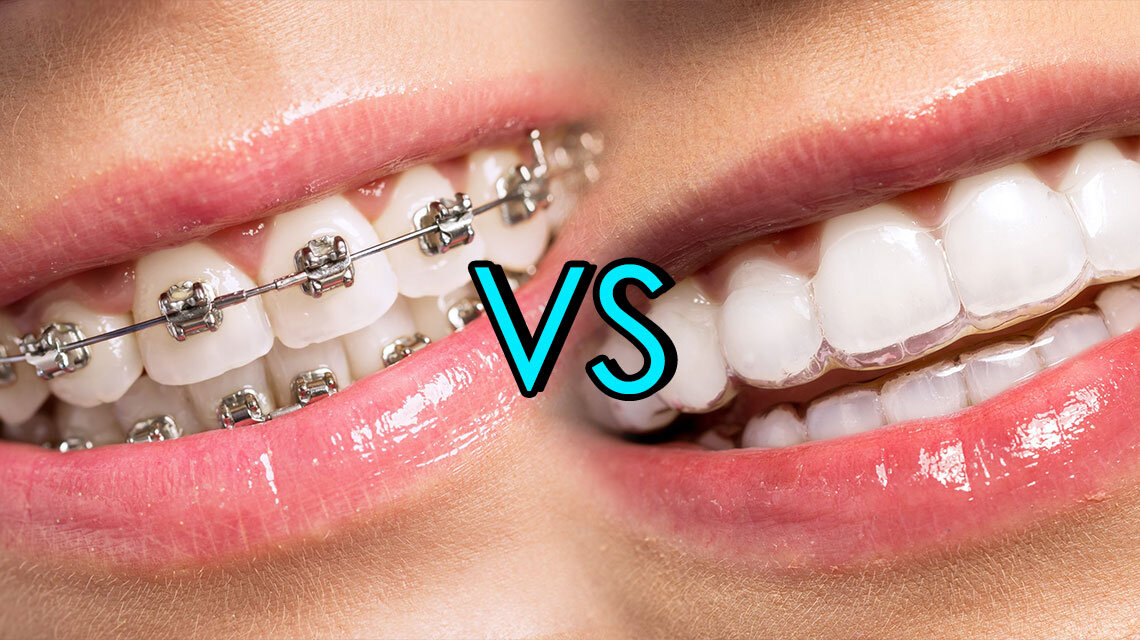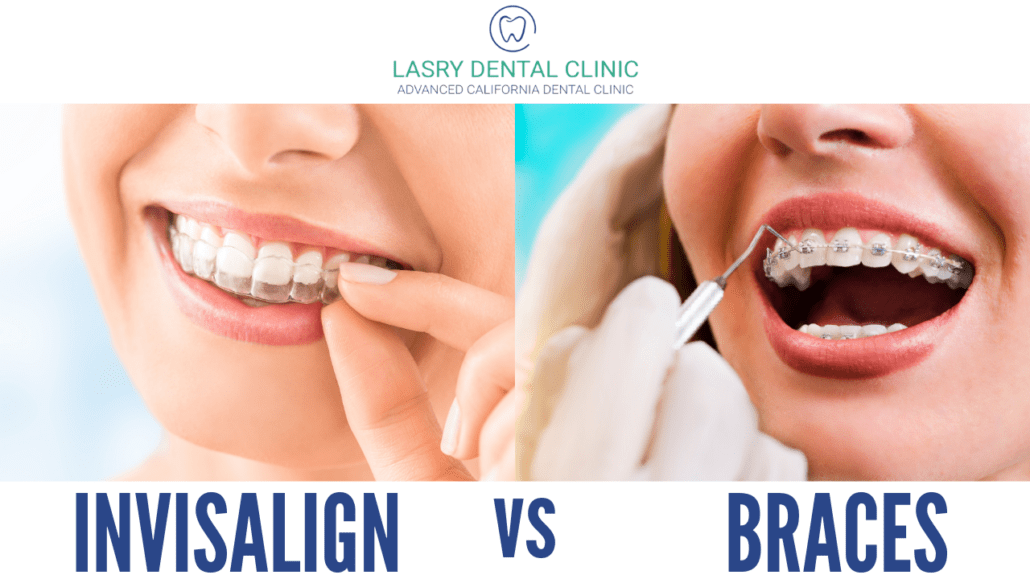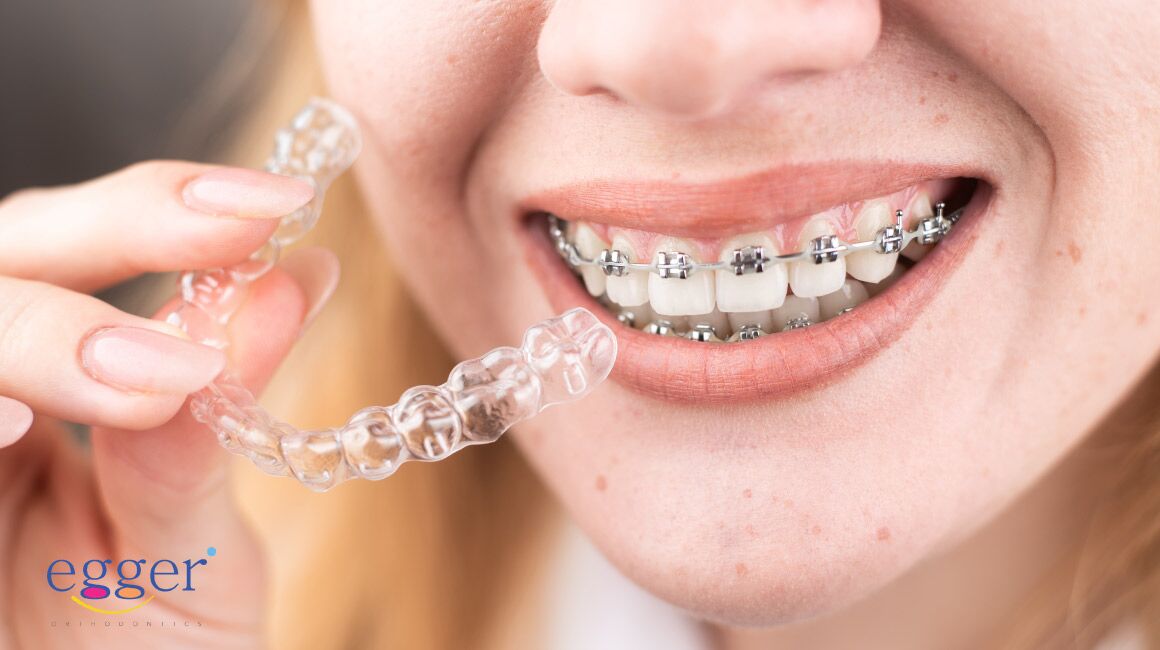Discover the Benefits of Invisalign for a Perfect Smile Transformation
Discover the Benefits of Invisalign for a Perfect Smile Transformation
Blog Article
Invisalign vs. Typical Dental braces: Which Choice Is Right for You?
When taking into consideration orthodontic treatment, the option in between Invisalign and conventional dental braces offers a number of important variables that merit mindful analysis. Invisalign provides a very discreet option with detachable aligners, while conventional dental braces offer an extra visible yet reliable service for extreme misalignment. Each alternative encompasses distinctive benefits and disadvantages related to aesthetic appeals, convenience, treatment period, and expense. Recognizing these nuances is crucial for making a notified choice that lines up with your individual preferences and lifestyle. The inquiry continues to be: which option will ideal satisfy your orthodontic requirements and assumptions?
Review of Treatment Choices

On the other hand, typical braces include steel braces and wires that are bound to the teeth. This method uses constant pressure in time to achieve placement. While efficient for complex orthodontic concerns, conventional dental braces call for regular visits for modifications and can posture difficulties in maintaining dental hygiene as a result of the problem of cleansing around braces and wires.
Both alternatives have their benefits, and the option usually depends upon certain oral conditions, way of life choices, and individual conformity. Inevitably, seeking advice from an orthodontic specialist is essential for establishing the most suitable therapy plan tailored to individual needs. Understanding the nuances of each alternative can significantly affect the total success of orthodontic treatment.
Visual Considerations
A considerable factor affecting the option between Invisalign and typical dental braces is the aesthetic charm each treatment supplies. Invisalign aligners are crafted from clear plastic, making them essentially unnoticeable when put on.
In comparison, traditional dental braces include steel brackets and wires, which can be extra recognizable. While improvements in orthodontic innovation have led to the advancement of smaller sized brackets and tinted elastics, standard braces still keep an even more noticeable profile. For some people, the presence of dental braces may prevent them from looking for required therapy.
Eventually, the choice in between Invisalign and conventional dental braces may hinge on personal choices regarding aesthetics. Clients who prioritize discretion commonly lean towards Invisalign, while those that are much less worried regarding visibility may go with typical dental braces. Comprehending the aesthetic ramifications of each alternative is essential for making a notified decision that lines up with one's way of life and preferences.
Comfort and Convenience

In regards to convenience, Invisalign aligners are removable, making it possible for individuals to appreciate their favorite foods without constraint and maintain optimal oral hygiene. Brushing and flossing are simplified, as the aligners home can be gotten during these routines, whereas conventional braces require careful maneuvering around brackets and cables.
Additionally, Invisalign's progressive system permits fewer orthodontic check outs. Clients generally obtain numerous collections of aligners at the same time, which can simplify the therapy process and decrease time spent in the orthodontist's chair. On the other hand, conventional braces demand routine modifications, making them less hassle-free for those with active routines. Invisalign. Overall, the convenience and comfort of Invisalign make it an attractive choice for several individuals seeking orthodontic therapy.
Treatment Period and Efficiency
While both Invisalign and traditional dental braces work in dealing with oral misalignments, the period of therapy can vary significantly between both choices. Normally, Invisalign treatment can take anywhere from 12 to 18 months, relying on the complexity of the situation. The clear aligners work by slowly changing teeth into their preferred positions, and routine follow-ups with an orthodontist help make certain linked here development continues to be on track.
On the other hand, conventional dental braces typically require a longer commitment, usually varying from 18 months to 3 years. This is because of their set nature and making use of cords and brackets, which can be much more reliable for complex situations and severe imbalances (Invisalign). The treatment effectiveness of typical braces is well-documented, as they permit precise changes and higher control over tooth activity
Inevitably, the choice in between Invisalign and conventional dental braces might rest on both the expected therapy duration and the certain dental problems available. Consulting with an orthodontist is critical, as they can provide tailored recommendations based on individual requirements, making certain the selected approach aligns with preferred timeframes and end results.
Cost Contrast and Insurance Alternatives
Cost plays a considerable function in the decision-making process for individuals taking into consideration orthodontic treatment, whether going with Invisalign or traditional dental braces. Generally, the price of Invisalign ranges from $3,000 to $8,000, while conventional braces typically set you back between $2,000 and $6,000. Variables influencing these expenses consist of the intricacy of the situation, the period of treatment, and geographical area.
Numerous dental insurance strategies offer partial insurance coverage for orthodontic therapies, but the specifics can differ widely. Usually, standard braces may be a lot more frequently covered by insurance coverage strategies compared to Invisalign, which some insurers categorize as an great site aesthetic treatment.
Furthermore, a number of orthodontic methods provide versatile settlement plans, making both therapy alternatives a lot more available. People need to make inquiries about possible financing options and price cuts for upfront settlements. Reviewing the total expense, consisting of insurance policy advantages and layaway plan, is essential for making a notified choice that straightens with both visual preferences and spending plan factors to consider.

Conclusion
In recap, the selection between Invisalign and conventional dental braces rests on several variables, consisting of visual preferences, comfort, therapy period, and price. Invisalign uses a very discreet, removable option that promotes oral hygiene and dietary flexibility, while standard dental braces may be better for complex dental issues and usually come with a lower cost factor. Eventually, examination with an orthodontist is necessary to assess individual circumstances and identify one of the most suitable treatment option for accomplishing ideal oral alignment.
When thinking about orthodontic treatment, the choice in between Invisalign and traditional braces offers numerous essential aspects that warrant mindful evaluation.Comparing Invisalign and standard dental braces discloses distinctive treatment options for orthodontic modification.While both Invisalign and standard dental braces are reliable in correcting oral misalignments, the duration of treatment can vary considerably between the two choices.Expense plays a substantial duty in the decision-making procedure for people thinking about orthodontic therapy, whether choosing for Invisalign or typical dental braces.In recap, the option in between Invisalign and standard braces hinges on multiple elements, including visual choices, convenience, therapy duration, and cost.
Report this page